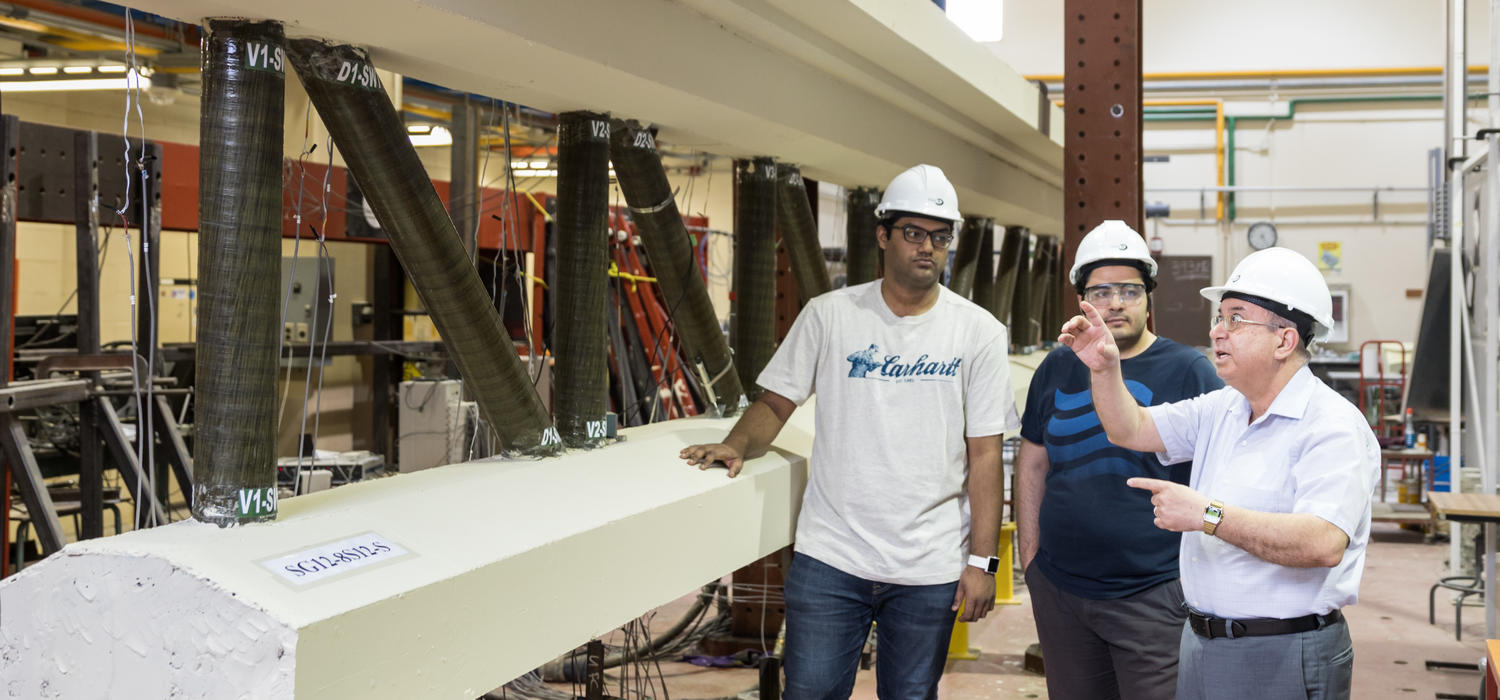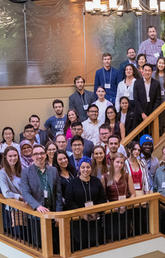Aug. 14, 2017
Resilient bridge of the future could save cities billions

More economical, stronger, sustainable, resilient, and virtually traffic jam-free for up to 125 years — at least as far as rehabilitation and "lane closed" signs go.
It could be the bridge of the future, and deep in a two-storey laboratory of the Schulich School of Engineering, Professor Mamdouh El-Badry is busy abusing a 10-metre section of his concrete-and-fibreglass creation, gathering crucial data on stress and endurance that he hopes will help his engineering masterpiece see the light of day somewhere in the city.
"I want the first bridge to be in Calgary, here in my hometown," said El-Badry, an expert in the use of advanced composite materials such as fibre-reinforced polymers in bridges and other structures.
15 years' worth of research and lab testing
He says a small pilot project, perhaps for foot traffic, would be an ideal demonstration of the bridge's potential.
"Perhaps they could start with a pedestrian bridge so they could see first-hand how it is designed and how well it works," says El-Badry.
"The extensive research and laboratory testing we have done over the past 15 years should bring this hybrid system to fruition in practice with confidence. The system is robust and versatile, and its application to a variety of real bridges is long overdue."
If the span performs as the professor says it will — and the civil engineering professor has the research and results to back his claims — the El-Badry Bridge stands to save cities like Calgary millions, if not billions, in construction and maintenance costs.
Industry heavyweights support research
With the support and backing of industry players like Armtec, PCL Construction, and Lafarge, which generously assisted in production of the prototypes recently stressed to the failure point in his laboratory, El-Badry has shown his trellis-supported bridge has a lifespan of up to 150 years, compared to just 50 for current steel-and-concrete spans in use globally.
It's the lack of metal that makes much of the difference. With no steel skeleton to corrode, swell and deteriorate the concrete, El-Badry's bridge is built to outlast current designs by a century at minimum.
The cost savings in maintenance alone would be significant for any city budget, but El-Badry's team has also found his bridge, built on a lattice of concrete-filled fibreglass, is stronger and therefore cheaper to build than steel, as it requires less material and support to handle the same traffic.
Cheaper, stronger, flood-friendlier
Moreover, the open lattice design allows water to flow past easily, making the bridge more suitable for flood-prone rivers, compared to the traditional slab and solid-web models which often trap water and debris.
It all sounds promising, and with several leading companies offering support for the professor's research, the main thing keeping cities like Calgary from reaping the benefits of the El-Badry bridge is conservative, low-risk allegiance to the tried-and-true. It's easier to build bridges on proven designs, even when a cheaper, stronger alternative is at hand.
That may soon change.
Coun. Shane Keating, chair of the city's transportation committee, was quoted in the Calgary Herald recently as saying he's intrigued by the idea and wants to try it out. "The city has a bit of a mentality where they don't want to be the first on wanting to try something because they want somebody else to try and test it," Keating told the Herald. "I'm saying, let's go out and pilot it and see how it does."



